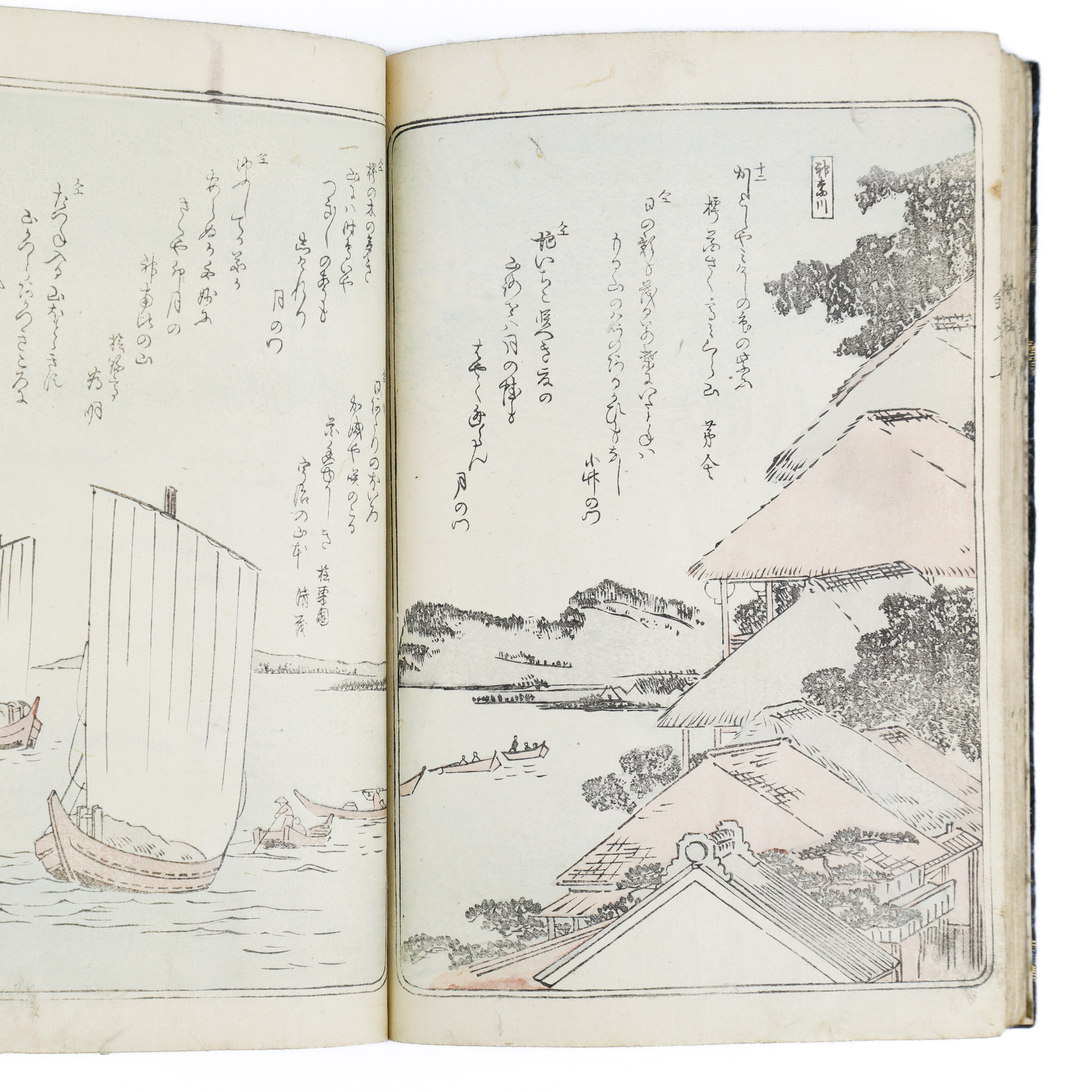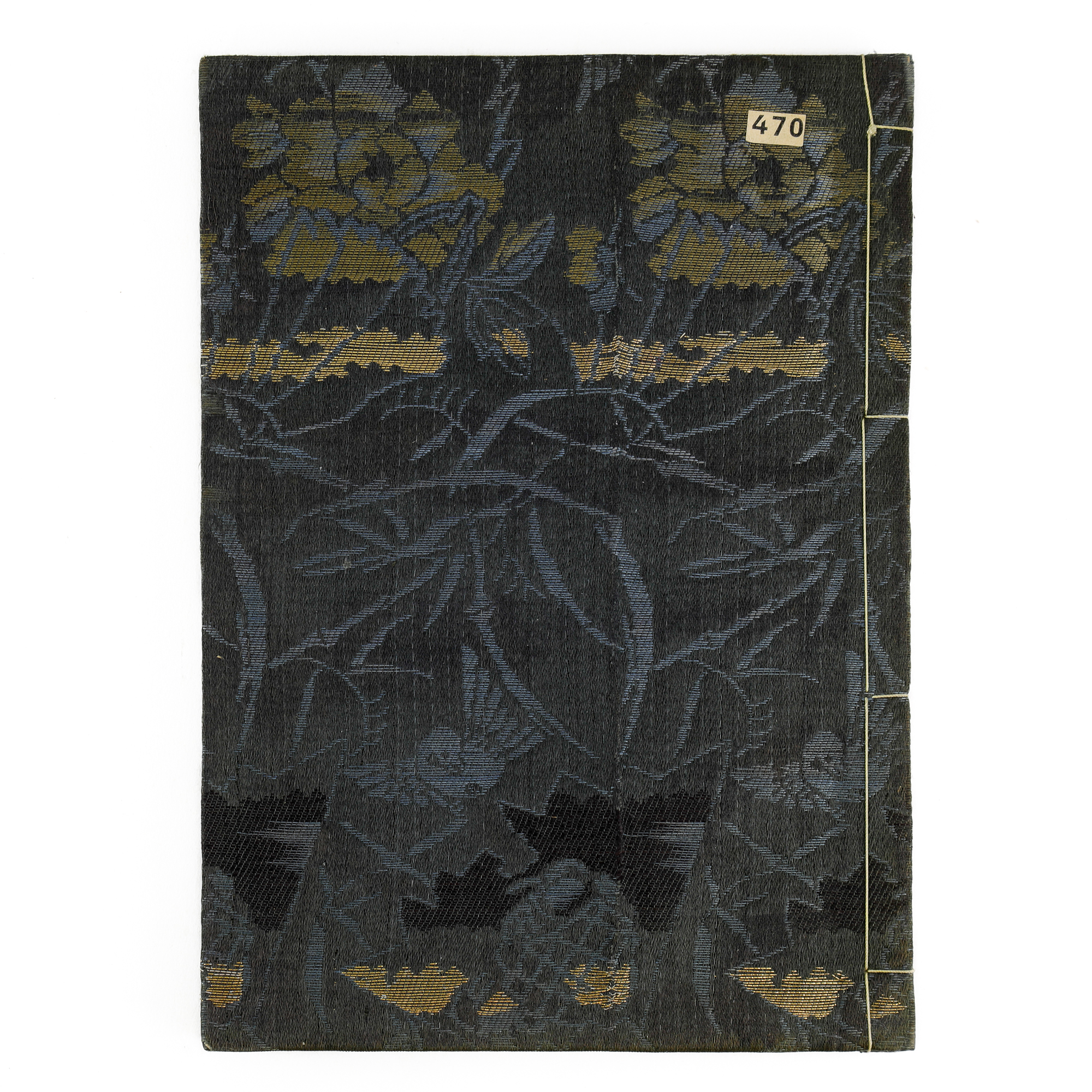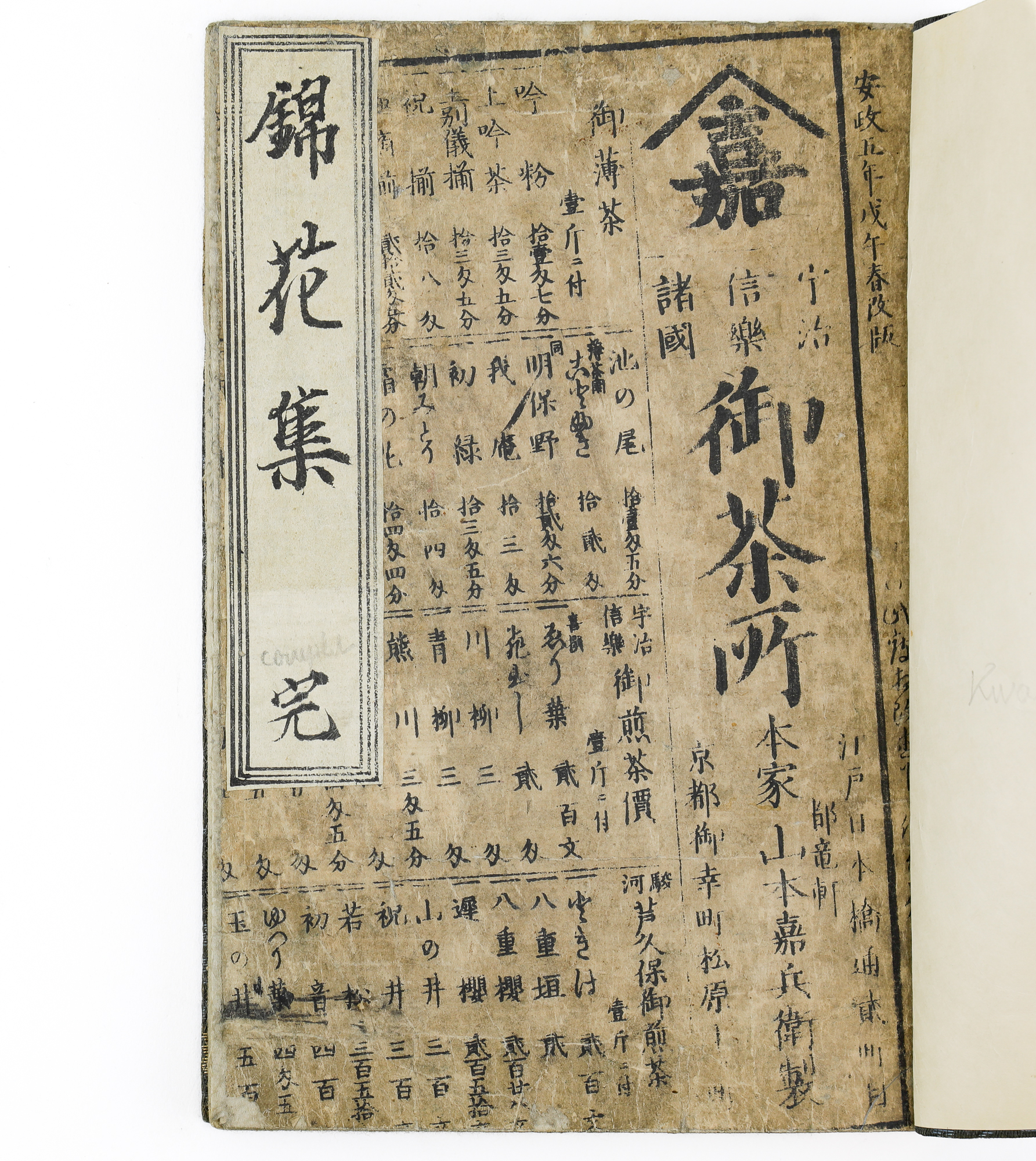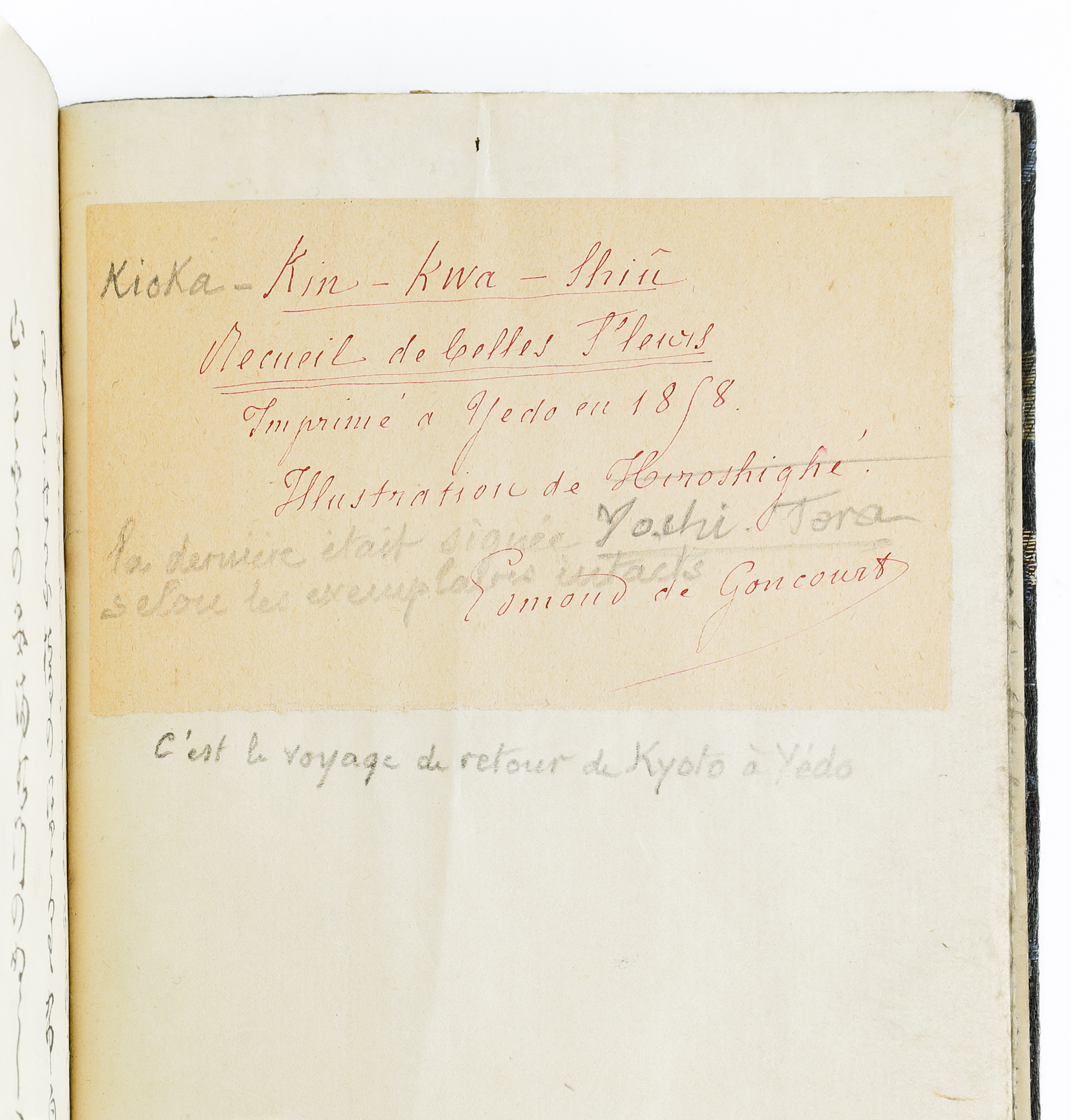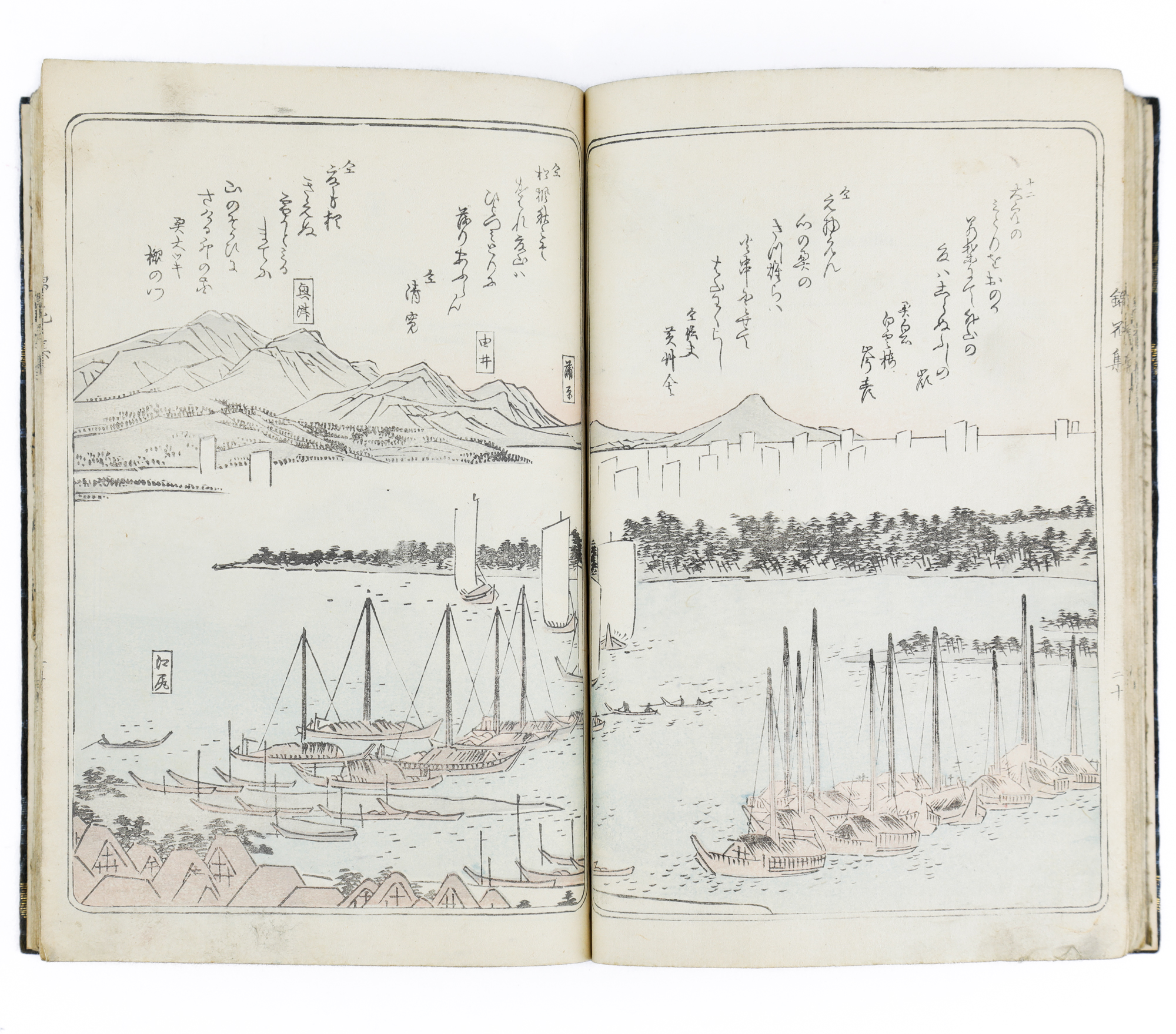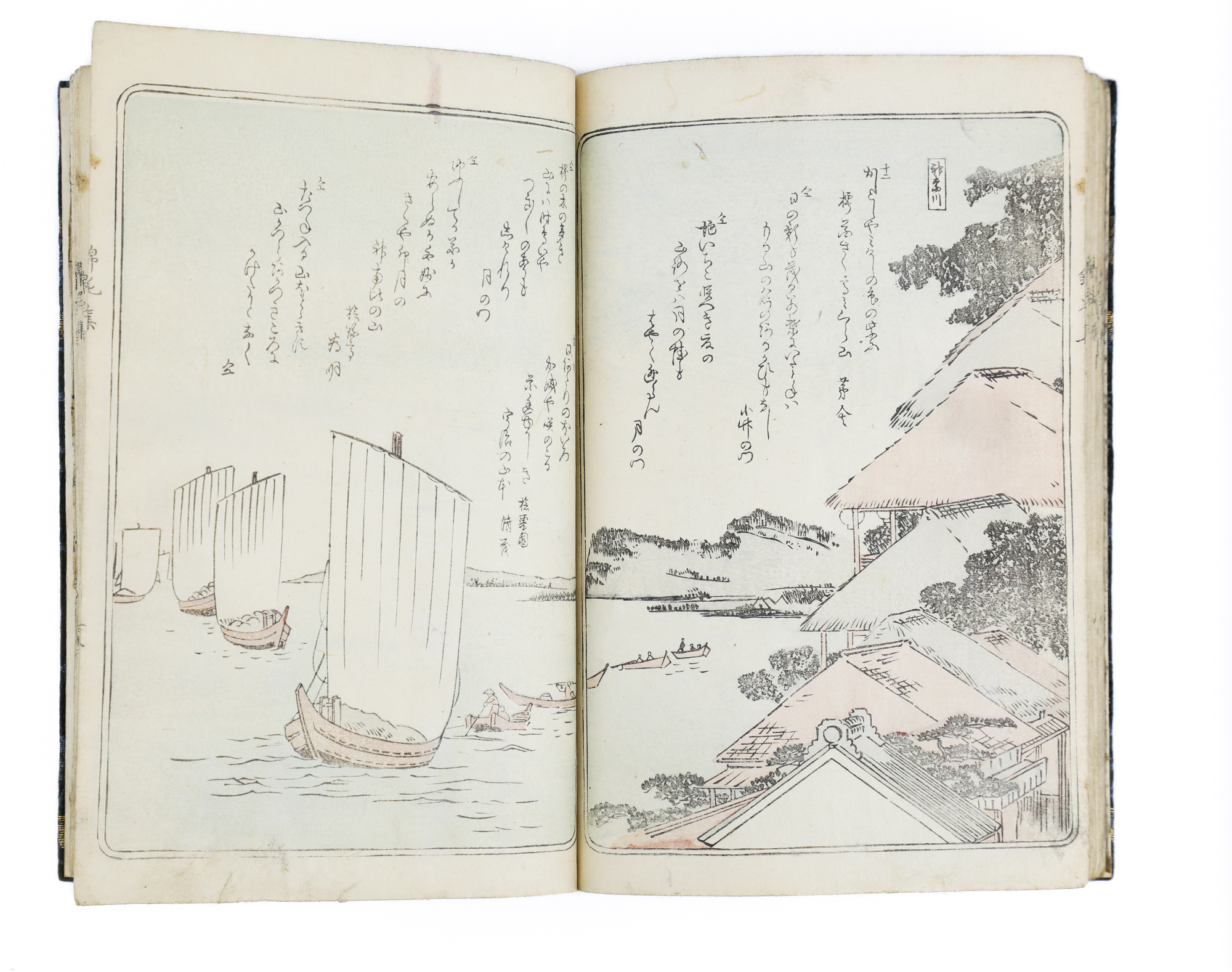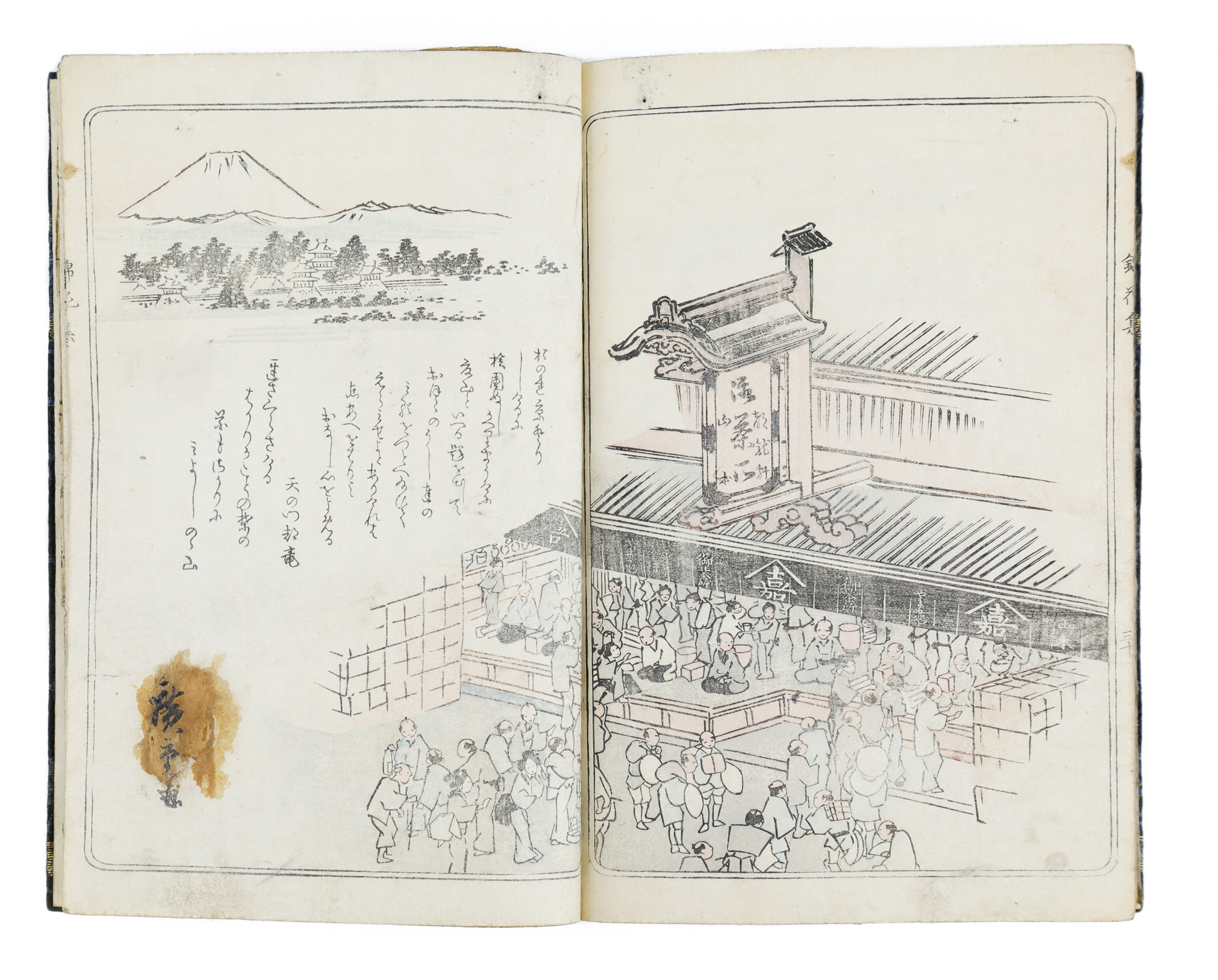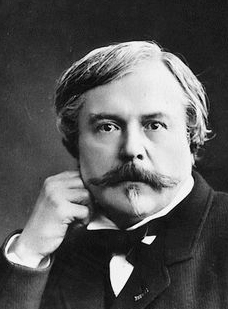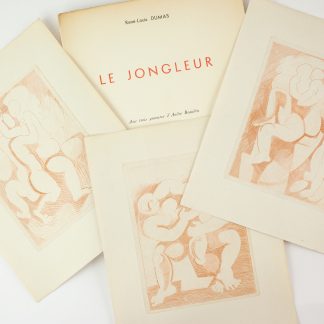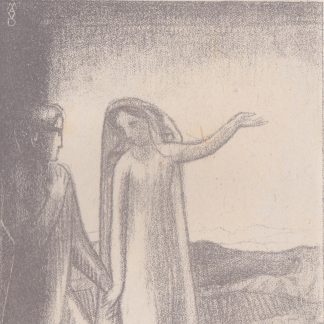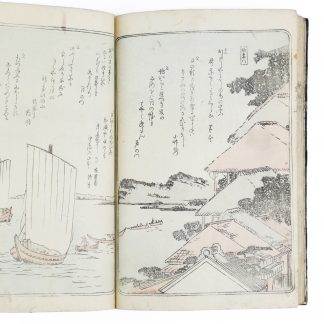Description
FIRST EDITION. A collection of prints by Utagawa Yoshitora, comprising 28 double-page views in colour of the stages of the Tôkaidô route between Kyoto and Edo.
EDMOND DE GONCOURT'S COPYwith an autograph note signed in red ink pasted to the back cover:
Kin-Kwa-Shiû
Collection of beautiful flowers
Printed in Yedo in 1858
Illustration by Hiroshige
Edmond de Goncourt
Edmond de Goncourt falsely attributed the collection to Hiroshige: an understandable error, since in this copy Yoshitora's signature, at the bottom of the last print, has been removed and replaced by filler paper bearing Hiroshige's signature!
After some time, Edmond de Goncourt seems to have realised the deception: in pencil, he crossed out the name Hiroshige and added "...".the last one was signed Yoshitora, according to the intact copies". The collection was nevertheless attributed to Hiroshige after Edmond's death at the "Extrême-Orient" sale from the Goncourt collection (1897, no. 1551).
On several occasions, Edmond and Jules de Goncourt claimed to be the instigators of a movement of taste and curiosity for Japanese art in France:
A taste for Chinese and Japanese food! We had this taste from the beginning. Nowadays, this taste pervades everything and everyone, even fools and bourgeois women. Who, more than us, has propagated it, sensed it, preached it and converted others to it? Who was passionate about the first albums, who had the courage to buy them? In the first of our books, in In 18.., a description of a fireplace with Japanese knick-knacks earned us the honour of being treated as a kind of baroque madmen and people without taste, and led Edmond Texier to request our internment at Charenton.
(Journal, 29 October 1868, t. II. p. 178-179).
Initially referred to as "Japonerie" and later as "Japonisme", this Japanese fashion was described by Edmond de Goncourt as one of the "greatest fashions in the world".three major literary and artistic movements of the second half of the 19th centurye century"(Preface to Chérie). In the 1880s, Edmond de Goncourt asserted the existence of a kinship between Impressionism and the "clear impressions" of Japanese prints. He also published two monographs on ukiyo-e: Outamaro (1891) and Hokusai (1896; he refers more specifically to Hiroshige in the conclusion toOutamaro : " colourations against whose brutality, in 1830, the painter Hiroshige fought in vain to bring back the colourations of the eighteenth century ". A statement which, although fanciful, bears witness to the curious 'French taste' of the time for the most faded of prints. More generally, Outamaro reflects both Edmond de Goncourt's enthusiasm for Japanese prints and his confusion about the printing and distribution processes of ukiyo-e, which were relatively unknown to Western enthusiasts. Could it be that by attributing this album to Hiroshige, he was trying to take advantage of this sometimes rather naive enthusiasm?
A fine copy in a silk binding. (copies in the Smithsonian Museum of Asian Art and the Metropolitan Museum of Art both retain the publisher's brochure).
Fukuro toji binding, midnight blue silk, flowers and birds embroidered in blue and gold. Cover preserved.
Missing with filler at signature; filler has worn away on subsequent leaves.

